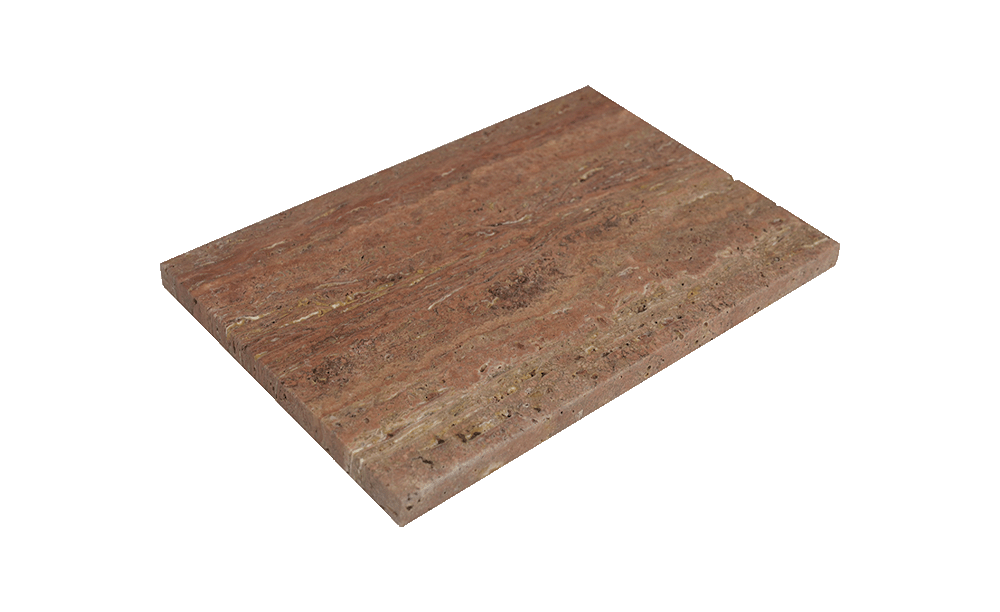Travertine stone is a type of natural limestone formed by mineral deposits from hot springs or limestone caves. With its earthy tones, natural pores, and antique appeal, travertine slabs are widely used in both residential and commercial architecture. But is it the right material for kitchen countertops or bathroom walls? Let’s take a deep dive into its characteristics, advantages, drawbacks, and the best use cases.
1. What Makes Travertine Unique?
Travertine is prized for its:
Naturally textured surface with open holes and pits
Soft neutral colors such as beige, ivory, walnut, and silver
Rustic and timeless appearance that gives spaces a Mediterranean or antique feel
Availability in various finishes – honed, tumbled, polished, and brushed
2. Travertine for Kitchen Countertops – Pros & Cons
Advantages:
Aesthetic Appeal: Travertine offers a warm, natural look that stands out from modern engineered quartz or polished granite. It pairs beautifully with wood cabinetry and rustic or farmhouse kitchen styles.
Cool Surface: Its natural coolness makes it pleasant to work on in hot climates.
Eco-Friendly: As a natural stone, it contains no VOCs and is recyclable.
Disadvantages:
Porous Surface: Travertine is highly porous, meaning it easily absorbs liquids like wine, oil, or juice if not properly sealed. This makes it vulnerable to stains and acid etching.

Soft and Prone to Scratches: Compared to granite or quartz, travertine is relatively soft and may scratch or chip with heavy use.
High Maintenance: It requires regular sealing, typically every 6–12 months, to maintain its resistance to moisture and stains.
Verdict:
Travertine can be used for kitchen countertops, but it’s not ideal for high-traffic or heavily used kitchens unless the homeowners are committed to diligent care and sealing. It's better suited for decorative kitchen islands or bar tops with limited daily wear.
3. Travertine for Bathroom Walls – Why It Works Well
Advantages:
Elegant Texture: Its natural surface texture adds warmth and sophistication to bathrooms.
Moisture Tolerance (When Sealed): When properly sealed, travertine resists bathroom moisture and humidity effectively.
Versatility: Suitable for shower walls, vanity backsplashes, tub surrounds, and even ceiling accents.
Timeless Beauty: Unlike trendy tiles, travertine has a classic charm that doesn’t go out of style.
Considerations:
Must be sealed properly to prevent water absorption and mildew.
Acidic cleaners (like vinegar) will damage the surface.
Installation should include waterproof membranes behind tiles in wet areas.
Verdict:
Travertine is a great choice for bathroom walls, especially when used in dry areas or as a feature wall. It combines aesthetics with comfort and can elevate the space when paired with proper lighting and fixtures.
4. Best Finishes for Wet or Kitchen Areas
To optimize travertine's performance in wet or cooking environments, choose the right finish:
Honed and filled: Best for kitchen countertops and bathroom walls. The surface is smooth and the holes are filled for easier cleaning.
Tumbled: More rustic, with rounded edges – ideal for walls but harder to clean on horizontal surfaces.
Polished: Offers a glossy look, but can be slippery and shows etching easily.
Brushed: Slightly textured, giving a natural matte finish suitable for walls and floors.
5. Tips for Using Travertine in Kitchens or Bathrooms
Always seal the surface upon installation and maintain regularly.
Use pH-neutral cleaners designed for natural stone.
In kitchens, use cutting boards and trivets to prevent damage.
In bathrooms, ensure proper ventilation and avoid hard water buildup with regular maintenance.
6. Conclusion
So, is travertine a good choice?
For kitchen countertops: Yes, but only if you prioritize beauty and are willing to maintain it. Otherwise, consider it for light-use areas like islands.
For bathroom walls: Absolutely yes. Travertine excels in creating luxurious, serene spaces when sealed and maintained properly.
Travertine stone slab, with its elegant texture and organic charm, is a beautiful natural material. When used thoughtfully and maintained carefully, it can transform kitchens and bathrooms into timeless spaces.



 English
English Français
Français عربى
عربى italiano
italiano









